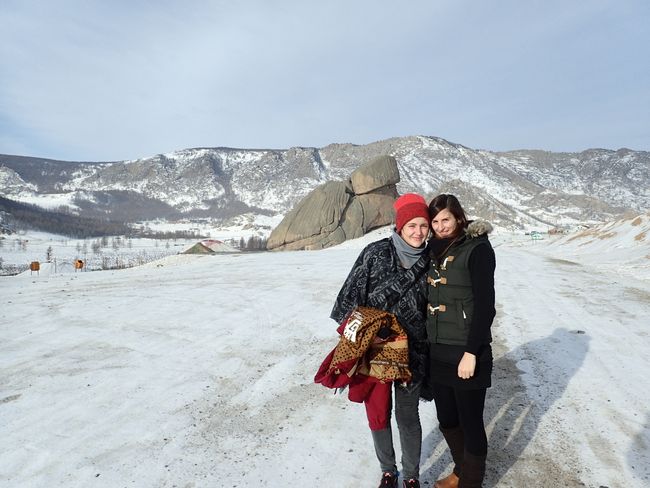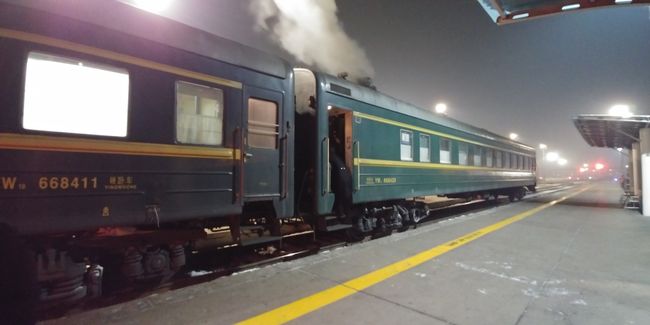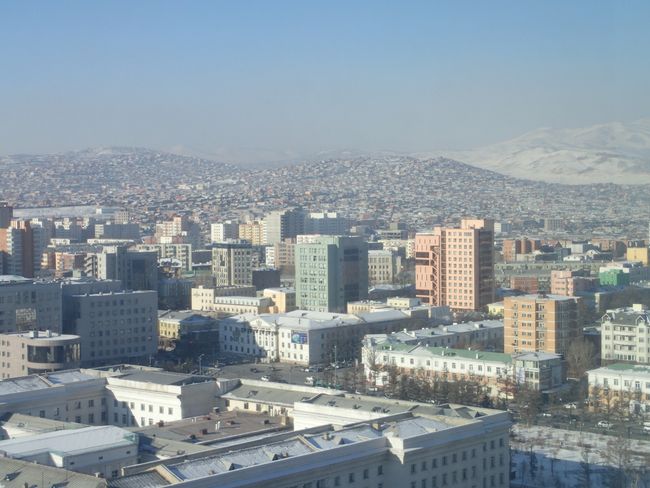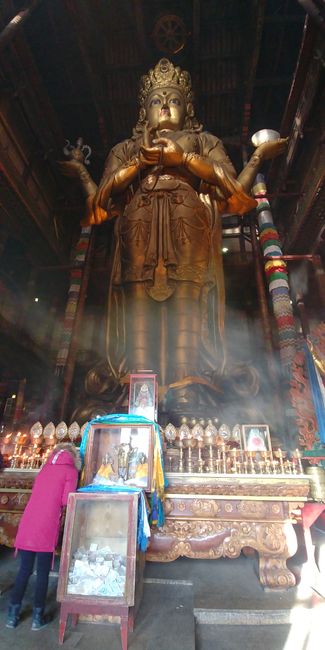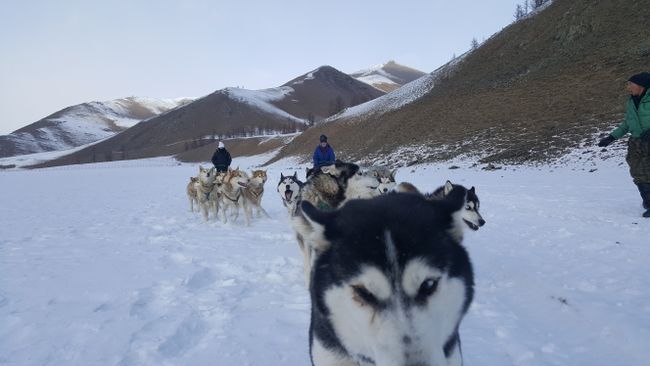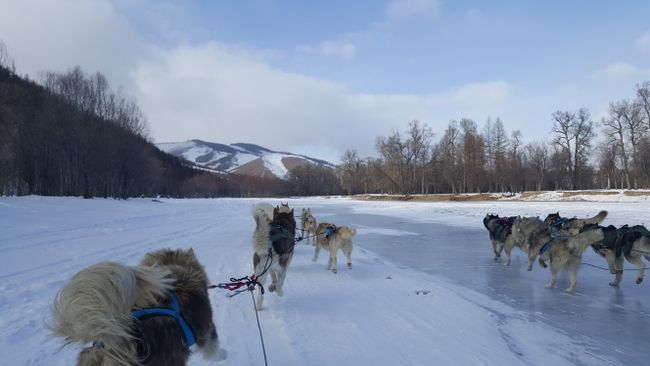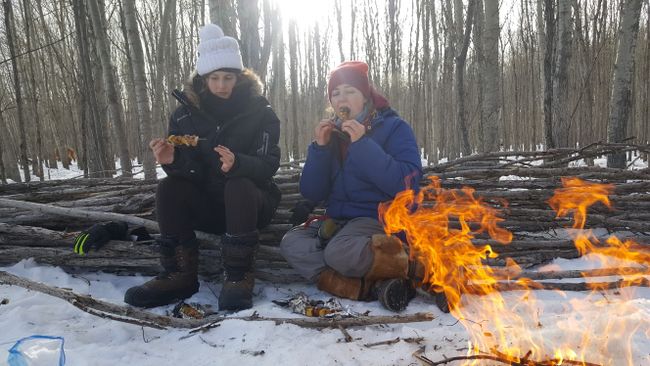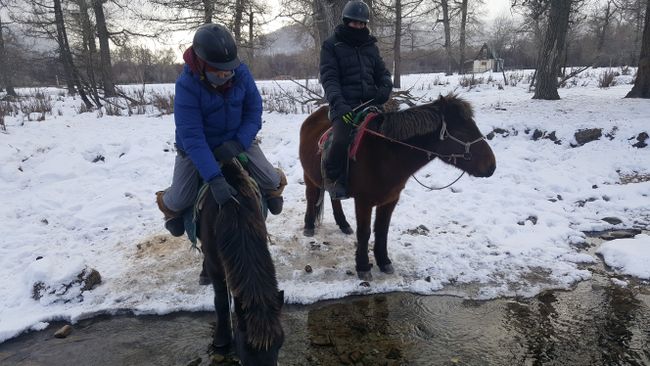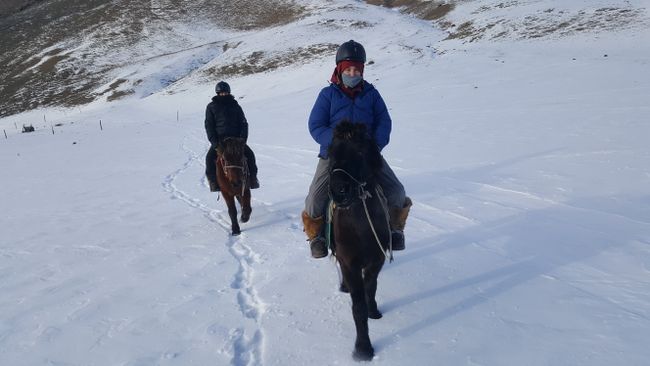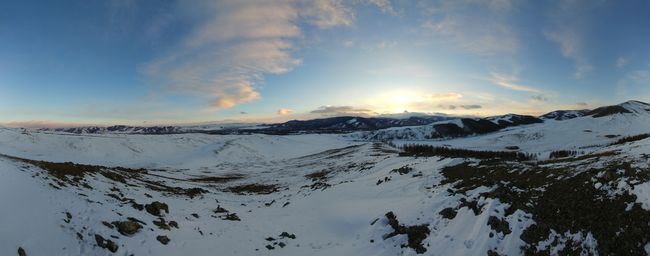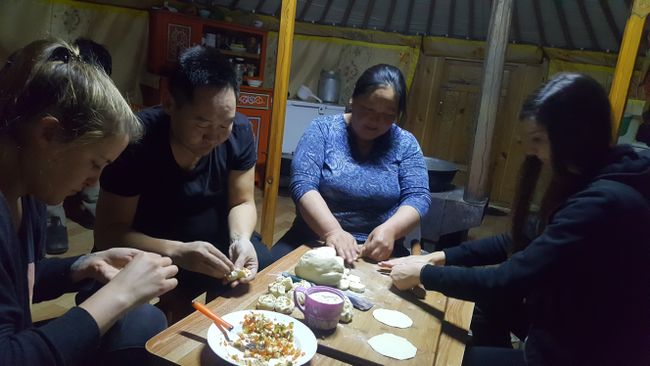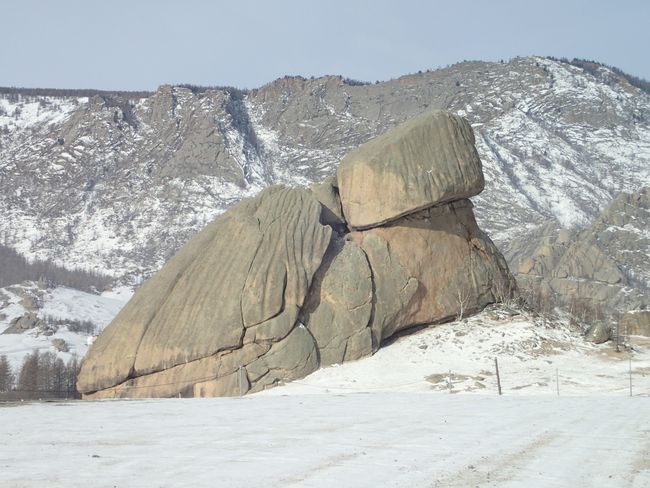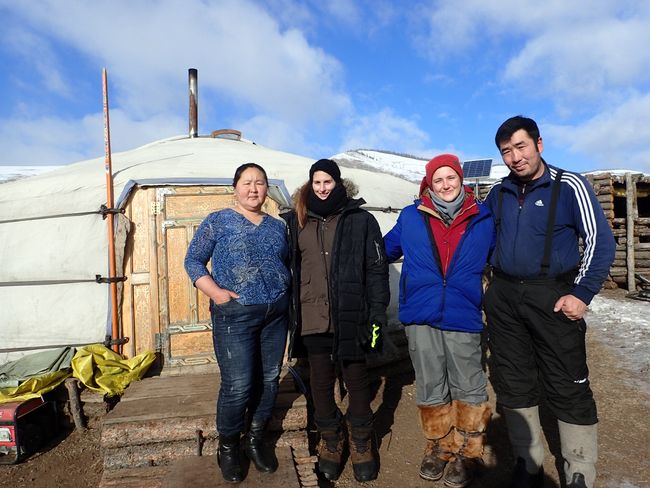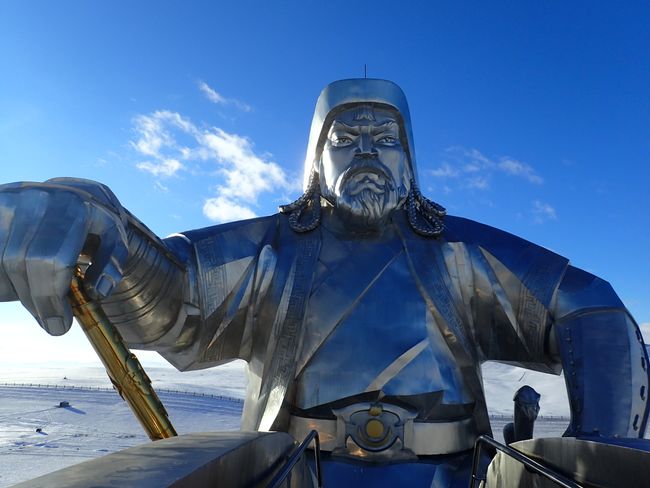Oh how beautiful is... Mongolia
ที่ตีพิมพ์: 18.01.2018
สมัครรับจดหมายข่าว
On the third of December we arrived in Mongolia early in the morning. It was quite interesting to cross a country border with something other than a plane. Especially because you go through the same process twice: passport control, customs, and drug search dog when leaving Russia and then again when entering Mongolia. After spending a long time in Russia, it was somewhat difficult for us to find our way around in the new country. After waiting for the bus for an hour, we didn't manage to find or catch it and took a taxi to the hostel instead (it didn't even cost 2 euros in the end). It was really amazing, right on the main square at Chinggis-Khan-Square in Ulan-Baatar, the main square of the capital and that on the 22nd floor with a view over the city. And because the stars were aligned for us, we were the only guests in our four-bed room.
In the first two days, we explored the city a bit. We went to the Gandan Monastery, a Tibetan temple, and were enchanted by the large, gilded statues of deities. We climbed the many steps to the Zaisan Memorial, which was built to honor Russian and Mongolian soldiers of the Second World War. The climb was worth it, the view of the city between the snow-covered hills was truly unique. And the Bogd Khaan Palace Museum was interesting as well, although disappointing in the sense that we had hoped to warm up a bit in the museum. The museum was mostly outdoors and we were frozen to the bone afterwards.
The absolute highlight in Mongolia was, of course, the two-day tour in the national park that we booked. We started early in the morning with a car to the national park and went directly to the husky farm to prepare for dog sledding. The huskies were adorable and they made every effort to go full speed on the frozen river. We were allowed to drive separate sleds, which worked out quite well. In between, we had a barbecue by the wayside in the snow. The wood, like the snow, is so dry that making a fire is child's play. After that, we went to a nomad family to pick up horses (albeit very small ones) and went horseback riding. It was simply breathtaking, through snow and valley and galloping uphill, until the poor horses had sweat freezing on their fur. When we arrived at our guest nomad family, we learned how to prepare real Mongolian dumplings, which were diligently eaten and incredibly delicious. After that, we played a card game called "20 ab" with the boys. The great thing about a nomadic ger is that the environmentally damaging coal stove can heat up very quickly. The drawback is that the temperature is difficult to regulate. So when we arrived, it felt like 50°C and in the evening when we went to sleep, it was only 10°C, so we bundled up thickly in our sleeping bags. Unfortunately, at some point during the night, our host mother came in to heat up the ger and we woke up drenched in sweat and rushed outside to cool off. With an outside temperature of -30°C, airing out actually worked quite well, but unfortunately Jolene accidentally left the door slightly open, so a few hours later we were back inside the ger at -10°C. It was a challenging night. The next morning, we helped clean the stable, which is much more pleasant than at home because all the manure is frozen and doesn't give off any smell or really make a mess. After lunch, we went to the oversized Chinggis Khan statue and then relaxed and went home. We strolled through the Black Market, which is big enough to get lost in, and packed all our belongings for the last train journey on the Trans-Siberian Railway.
The train journey was really eventful because it was relatively long and uncomfortable in many ways. Fortunately, we had the four-bed compartment to ourselves again, but in the evening it started with leaving Mongolia, entering China, and then additionally changing the carriage, so the toilets, hot water, and all other amenities on the train were inaccessible for six hours and therefore a good night's sleep didn't come until very late. Yes, you read that right. The railway system in Russia and Mongolia is so different from the Chinese system that the carriages have to be changed to match the track gauge. How does it work? By decoupling each carriage, elevating it five meters high with the help of two lifts, then driving away the old carriage, positioning a new one underneath, and lowering the carriages onto it again. It's really fascinating, if it doesn't keep you from sleeping 😉
Video dog sledding: https://vimeo.com/251595948
Video of driving on ice: https://vimeo.com/251596375
สมัครรับจดหมายข่าว
คำตอบ

